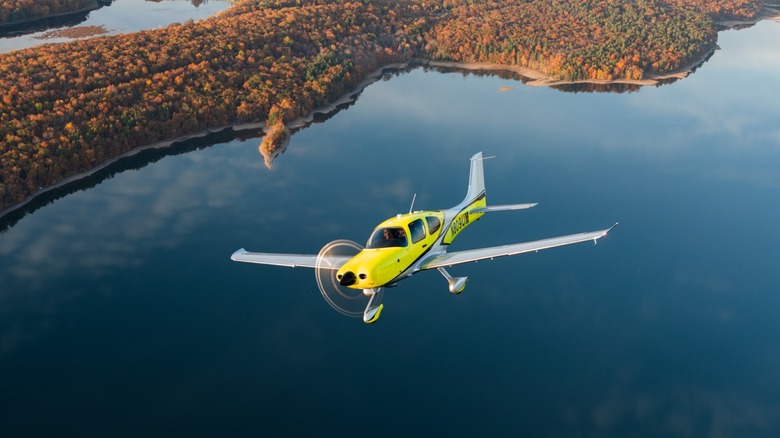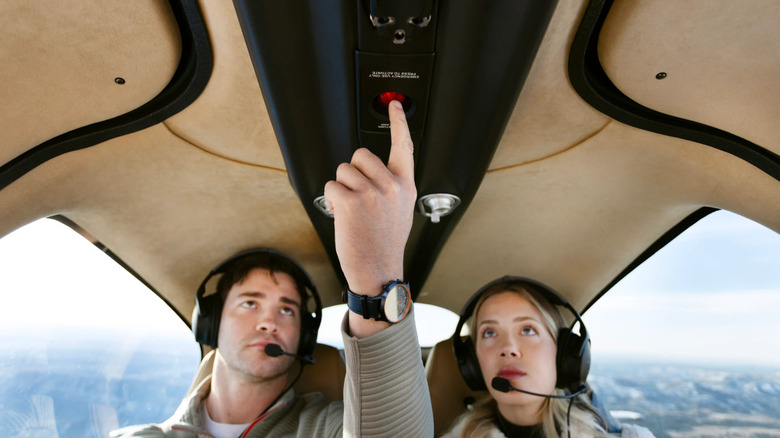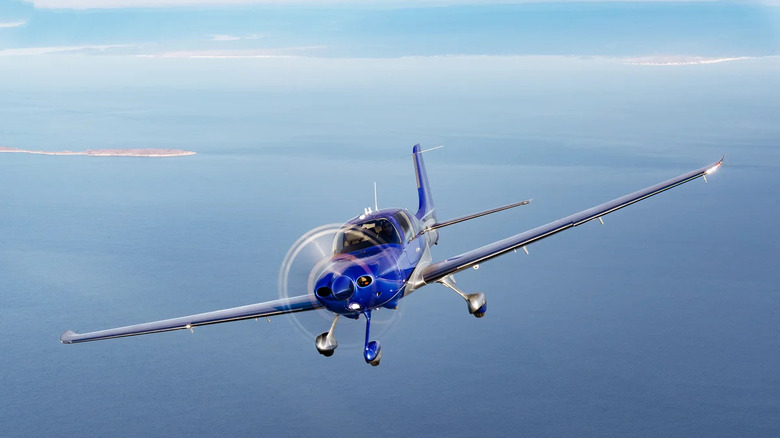This All-American Aircraft Brand Has Been Owned By The Chinese Government Since 2011
With origins as a family-owned American business, Cirrus as a company has been around since 1984. Founded by the Klapmeier brothers, the aircraft company had humble origins in their Wisconsin barn. Although it took another four years before it could start selling to the public, Cirrus opened its first facility in Minnesota just a decade later. Since then, it has become a popular choice for people looking to get their private pilot license and even for celebrities flying to their performance venues. Known for several safety-focused innovations, Cirrus has everything you could want from a homegrown American brand. Except, of course, the fact that it's no longer owned by Americans.
After a quarter of a century, the Minnesota-based company was acquired by the Aviation Industry Corporation of China (AVIC) in 2011. In the aftermath of the Great Recession, Cirrus joined its umbrella of companies, which include other subsidiaries in the aviation industry like the Chengdu Aerospace Corporation and the Shenyang Aircraft Corporation. In 2024, Nikkei Asia also reported that Cirrus became listed on the Hong Kong Stock Exchange. That said, Cirrus doesn't necessarily promote its foreign investment in its official channels. On its website, Cirrus mentions retaining many of its US-based facilities for training and service. Plus, it does not list a single Chinese national in its leadership team.
What we know about Cirrus Aircraft today
Despite the change in hands and a new IPO to please, Cirrus Aircraft has continued its path of innovation. In the last decade, they have had a strong push towards personal aircraft, such as with the award-winning Vision Jet. Designed for luxury private flight experiences, Cirrus shares that the single-engine personal jet is the first of its kind. Apart from standard features, like Wi-Fi and entertainment systems, the 7-seater jet boasts two key patented safety features: Safe Return and the Cirrus Airframe Parachute System (CAPS), a pioneering parachute safety system with FAA certification that was first released in 1998.
But before the Vision Jet took flight, Cirrus was also famous for its SR series, which shares the same Safe Return mechanism, the first FAA-approved emergency auto-landing system. It also has a fancy Garmin-powered, high-resolution display, Perspective Touch+. Although it has fewer seats than the Vision Jet, it boasts a high level of customizability. And of course, apart from its aircrafts, Cirrus also offers a myriad of courses that range from complimentary training and online courses to even a private pilot license. With this, they offer a holistic customer experience from manufacturing and usage to repairs.
Now, it's important to know that in an increasingly global economy, it's pretty common for companies across industries to offload aspects of their manufacturing to other countries. However, the more compelling argument is when the industries are those that affect critical infrastructure.
Why it matters which countries own aircrafts
With complex supply chains, foreign ownership has always been a tricky discussion. On the positive side, it can mean access to technology, capital, and expertise that would have previously been limited. However, it does open doors for issues like intellectual property theft, sabotage, and dependence on another country's economy. In the case of Cirrus Aircraft, this is even more pronounced since it's owned by a state-owned company, not just a private one. While Cirrus positions itself primarily for personal aviation, this doesn't mean it doesn't tread on precarious ground, especially since it's part of a conglomerate that has dipped into multiple defense areas. AVIC is a notable military vehicle manufacturer for the People's Liberation Army. One of the largest military contractors globally, the Beijing-based conglomerate makes a horde of China's domestic aircraft.
In recent times, there has been a push for many global military units to invest in building indigenous aircraft as part of their fleet modernization. For example, India proudly released the HAL Tejas in 2023, which was a step towards independent defense manufacturing. While its early production still used American engines, it did state plans for technology transfers. That said, aircraft aren't the only industries that many countries are locking down when it comes to foreign ownership. In 2024, several states in the United States enacted laws around foreign investments in critical infrastructure, such as farmland and renewable energy.


